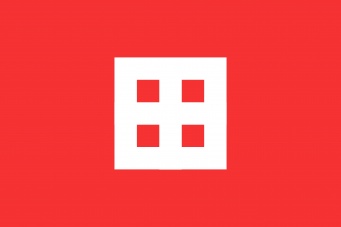
IP migration poised to leave SDI dead in the water
2015 – the year of IPTV
One of the two central themes which emerged at last month’s IBC was the broadcast industry’s continued migration towards IP-based delivery and the subsequent, inevitable death of SDI (the other was the ongoing rise of 4K/Ultra HD).
It’s been on the cards for a while but 2015 has seen this shift towards ‘IP solutions’/IPTV gather pace. Hardware-based technologies are giving way to software-based developments. Decades of SDI-centric infrastructure and workflows are being eclipsed by newer, more efficient and flexible methods.
At the Amsterdam show, Imagine Communications, a global provider of broadcast products and services, announced a deal with EVS to develop an IP-based structure for live productions, including sports and news.
Charlie Vogt, CEO of Imagine, said: “We are taking their best-of-breed solutions in slow motion and instant replay and marrying that with our playout automation.”
It could be among the first of many such collaborations.
Indeed, Vogt predicts the shift to IP will be “the most disruptive transformation that this industry’s seen in a long time”.
Traditional broadcasters have much of the content (and the rights to that content), but they’re also hampered by old technology.
Moving to IP-based infrastructure and away from SDI will take time and heavy investment in bandwidth and kit, so a phased approach is likely to be adopted to enable the transformation to happen alongside existing operations.
What’s behind the change?
Simply? Viewing habits of the masses. These have changed massively of late, and have led to huge growth of subscription revenues. And, as we all know, where eyeballs go, advertisers quickly follow, with the subtlety of a teenage boy following the girl he fancies from room to room at a party.
People want – and are already used to – content available on their TVs, tablets, phones and laptops at times which are convenient to them, not the traditional broadcasters.
It’s ‘push’ media giving way to ‘pulling’ consumers: viewers choosing what they want when they want it, rather than a selection of content being pushed their way whether they like it or not and whether they’re ready to watch it or not.
And now those traditional broadcasters are not only faced with changing viewing habits but are also challenged by the likes of Google, Apple, Amazon and Netflix, who provide OTT services (see below for definitions).
Advantages of IPTV
IPTV offers significant advantages, including the ability to integrate television with other services such as high-speed internet access and VoIP.
While SDI-based content delivery allows for a constant downstream flow of broadcast signals (with viewers able to switch between channels), IPTV is different: only the content a customer selects is sent into their home, which frees up bandwidth.
Standards
IPTV has an ongoing standardisation process and the Advanced Media Workflow Association (AMWA), which helped create the standard for delivering programmes as files, has now turned its attention to the IP technology itself.
Its file standard was adopted by the Digital Production Partnership (DPP) and it’s now working to align manufacturers with organisations that will use IP technology. The AMWA’s objective is to develop processes that maintain content and metadata from a camera to delivery and archive, via various production systems.
By the end of September 2015, 17 companies had confirmed their involvement in AMWA’s project, including NBC Universal, Ericsson, Sam (Snell Advanced Media), EVS and Encompass.
Definitions
While IPTV (internet protocol television) and OTT (‘over-the-top’) both use the internet to deliver content, they are different beasts based on different business models, qualities of service and quality of content. Ownership can vary between the two, as well.
IPTV (internet protocol television)
While traditional delivery of TV signals sees all programming broadcast simultaneously, IPTV allows content to be delivered one programme at a time.
Services are delivered via an optimised, high-bandwidth, dedicated network (an online ‘walled garden’) and viewers can stream content directly from the source.
IPTV services include live TV (with or without interactivity), time-shifted TV (such as catch-up) and video on demand (VOD).
Encoded as a series of ‘IP packets’ and received via end-users’ set-top boxes, IPTV services can be free or fee-based.
As security and reliability have developed, so too has users’ experience.
IPTV: not to be confused with iTV (Internet TV)
Confusingly, IPTV is not the same as iTV (Internet TV), in which content is typically distributed through a website. ITV services are also known as ‘over-the-top’ (OTT)…
‘Over-the-top’ (OTT)
OTT streaming is the delivery of audio/video content using the open and ‘unmanaged’ internet, without a dedicated network or infrastructure.
Over-the-top is a general term for the service that you access online that is not offered by an internet service provider. It’s referred to as ‘over-the-top’ because these services ride ‘on top of’ the network you already get and don’t require any technology other than a router.
OTT has gained widespread popularity with a growing number of providers such as Netflix, Amazon, Apple and Google offering VOD services to a widespread and loyal customer base. We feature OTT providers in our monthly In The Frame … articles.
However, OTT providers often (but not always) serve as complementary to more traditional viewing, with many people watching a combination during a ‘normal’ week.
SDI (serial digital interface)
The one-directional delivery of linear TV as we’ve known it for decades – via terrestrial, satellite and cable formats.
Which way now?
Perhaps OTT and IPTV are not yet able to disrupt or replace traditional broadcasters but viewers’ habits and the future of the industry demands attention. The developments are worth watching.

In The Frame - April '23

In The Frame - March '23
